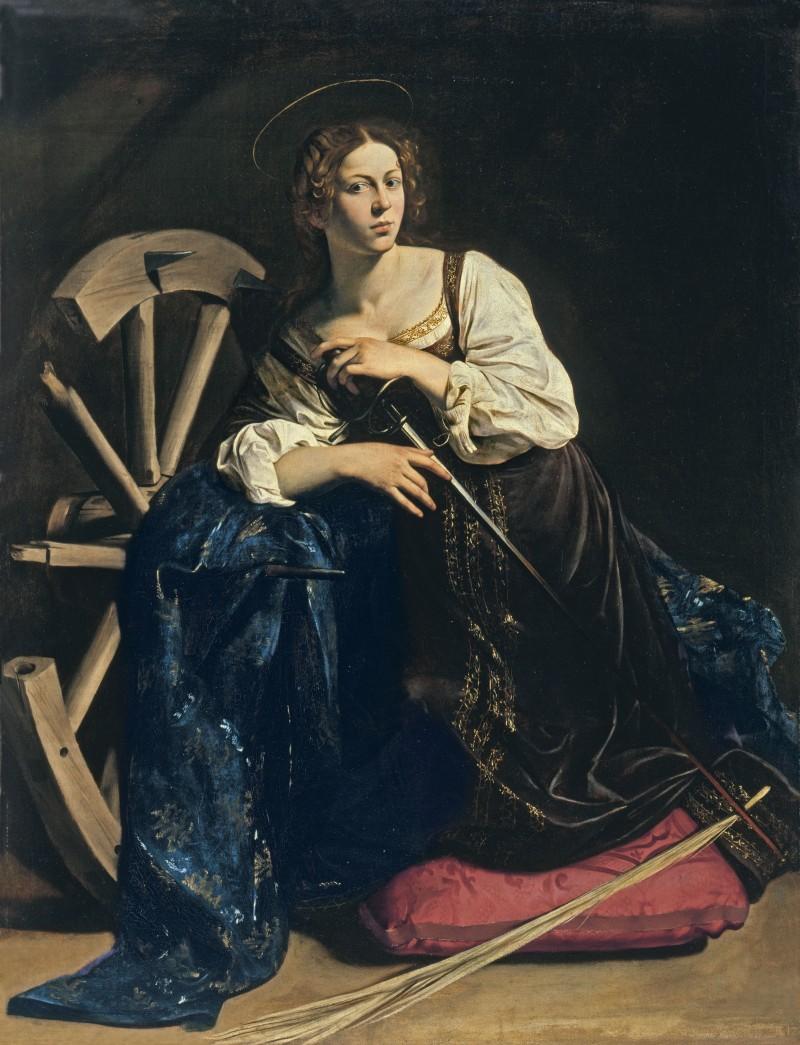The legend of Santa Caterina

As we watch Maclean’s fairy like character develop as mother, lover, confessor and judge, entwined in Pic’s cyclical fate, one cannot help but draw connections to Santa Caterina, her statue illuminated and watching us as we sit in the deconsecrated church dedicated to this martyred saint.
The violence towards fairy in the film is evocative of the torture depicted in stories of martyred saints in the Christian tradition. Killed for their loyalty and testimony to their beliefs, the fables of female martyrs have become cautionary tales of morality.
According to legend, Santa Caterina was martyred in the fourth century. She lived in the city of Alexandria in Egypt and was known to all for her intelligence and her beauty. She chose to convert to Christianity although this was against the strictest orders of Roman Emperor Maxentius, who, on visiting the city and hearing of Caterina, demanded to meet her. Enticed by her beauty, Maxentius decided to make her his second wife. Caterina however refused, stating her faith could not allow this. Denying him his sexual advances and converting both his wife and closest advisers to Christianity, Santa Caterina was imprisoned and threatened with a torture device made up of four wheels studded with knives – now known as a Catherine Wheel. Although the instrument was destroyed in an act of what was believed to be divine intervention, saving Santa Caterina from such a horrific ordeal, she was instead beheaded. It is said that her body was then carried to Mount Sinai by Angels.
Today what is believed to be the holy relics of Santa Caterina are enshrined in the Monastery of the God-trodden Mount Sinai which is also known as Saint Catherine’s Monastery. According to The Cult of the Saints which emerged in the third century and quickly gained a strong following, relics of martyrs like Santa Caterina were believed to provide evidence of God’s power on earth. Martyrs had chosen to live life as close to Christ until death and their remains were thought to be a contact between heaven and earth.
Reflecting back to Spite Your Face, fairy becomes a connection for Pic between the dark underworld and glitzy world above (of which is earth and which is heaven is unclear). She appears to him alone – as if a vision – to remind him perhaps of his humble beginnings, wherever these were, or perhaps a warning as to what is to come, whatever that might be. The martyred saints undying commitment to stay true to what they believe is a direct contrast to the dark and twisted fairytale of truth and untruth presented to us in Spite your face. Just as in the original Pinocchio by Carlo Collodi, the moral compass of the characters is tested by the superficial allure of something more exciting than what one currently has.
Representations of martyred saints can be found throughout art history hence Santa Caterina becomes a strong character to identify with Fairy and use within a work that directly questions the misogynistic imagery we find everyday in our contemporary culture. There is however no divine intervention in Maclean’s distorted work, instead we are left in the vicious cycle she creates with seemingly no redemption….
CH.
Image: Santa Caterina d’Alessandria. Michelangelo Caravaggio

